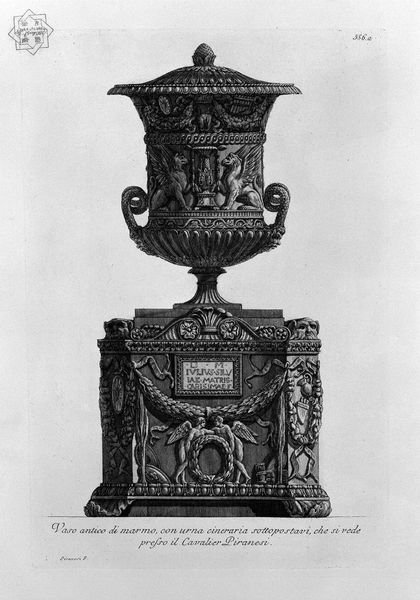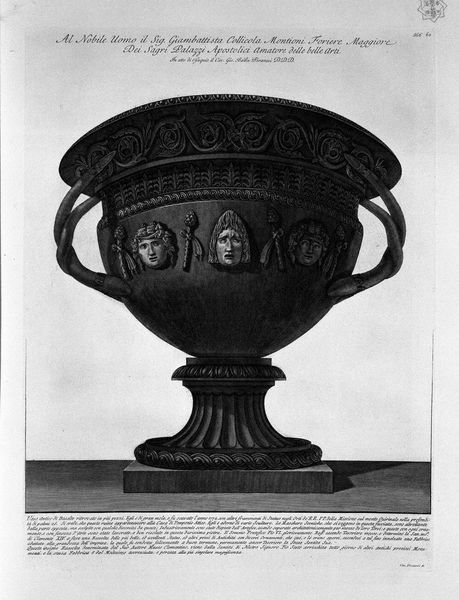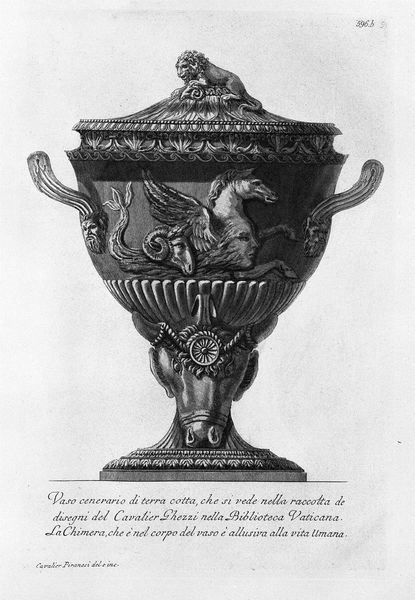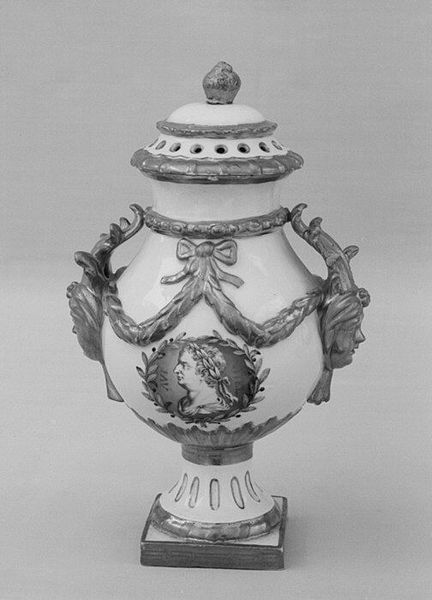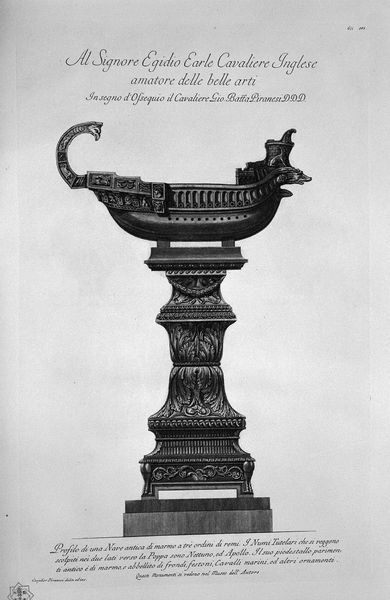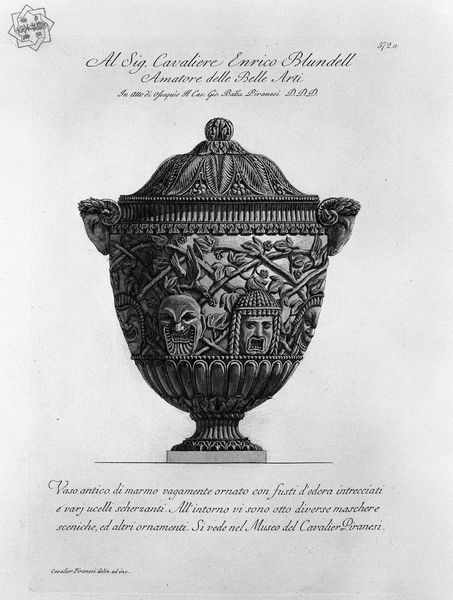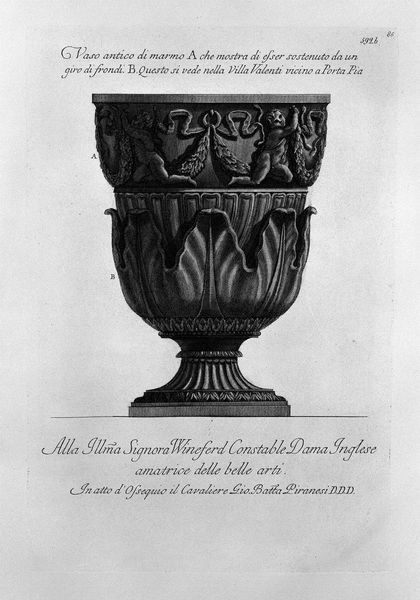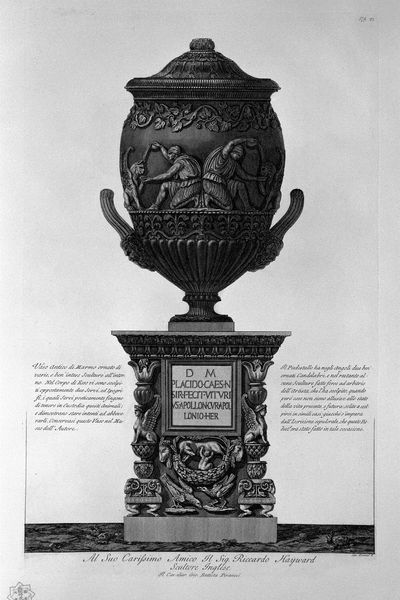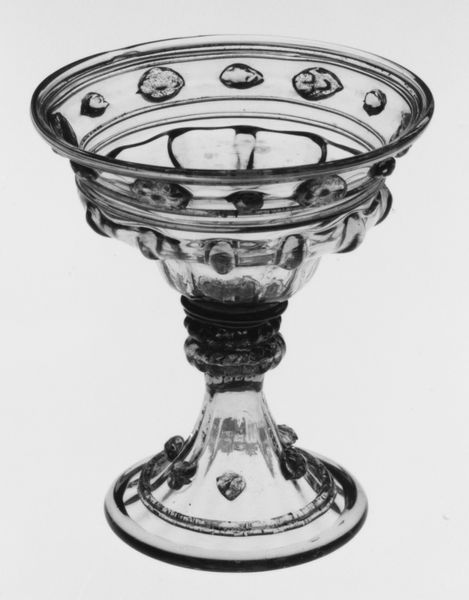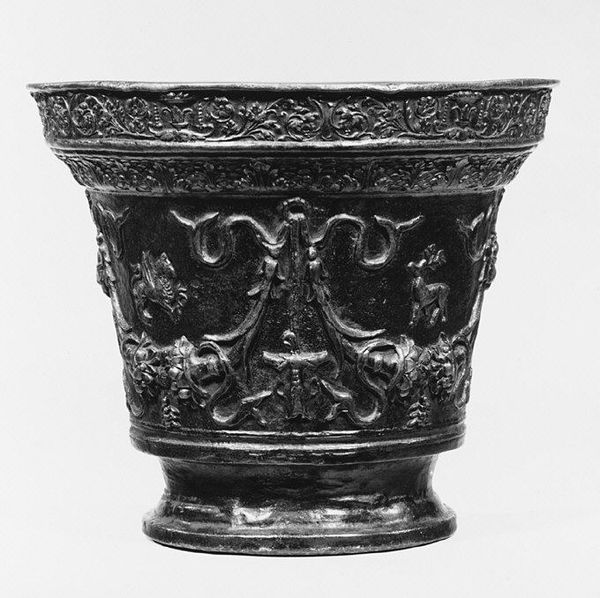
drawing, print, graphite, engraving
#
drawing
#
neoclassicism
# print
#
old engraving style
#
form
#
geometric
#
line
#
graphite
#
graphite
#
engraving
Copyright: Public domain
Curator: Good morning, and welcome. We're looking today at Giovanni Battista Piranesi's "Another vessel supported by tripod," dating from 1778. It’s an engraving, demonstrating Piranesi's meticulous draughtsmanship and fascination with classical forms. Editor: Wow, there's something quite intimidating, almost severe about this ornate vase. The sheer detail… feels almost overwhelming! It reminds me of those stately homes where you can’t touch anything. Curator: Exactly. Piranesi's process involved multiple stages of etching and engraving to achieve such tonal complexity. Note the clear emphasis on line and form; neoclassicism relished clean lines and the revival of classical ornament. I'm drawn to the social aspect implied, hinting at the high craftsmanship dedicated to objects within elite spheres. Editor: I see what you mean by craftsmanship. The ornamentation! It feels incredibly labored. But I can’t help feeling a sense of dark humor lurking in all those tiny, sculpted faces and grotesque figures. Are they winking at us? Is it all just a tad... much? Curator: "Much" is a fine assessment, I believe! We observe here not just decoration, but the accumulation of value, of labor embedded within the material object itself. The vessel itself acts as a display for artistic accomplishment but moreover, economic prowess. Think about the materials required, and the man-hours expended. Editor: Thinking of labour... each little squiggle and flourish painstakingly etched... I imagine the artist hunched over this copper plate for hours on end, transforming pure labour into high art! Perhaps he added those cheeky faces as a hidden joke. Curator: Potentially, or those little characters point to something about status, how wealthy patrons flaunted their collection to demonstrate not only their access to beauty but command over resources and labor. And let’s remember, the "original" is, in fact, a print – further democratizing the object albeit within a restricted audience. Editor: That's a solid point. The print medium also turns it into an object intended for consumption and distribution rather than unique display. Though despite this "democratizing" intent, one can't get past that aura of forbidding opulence! Still, I am walking away with a refreshed understanding of "value," not merely financial, but as an artefact containing intense artistry. Curator: Indeed. It speaks volumes about how artworks were viewed as both aesthetic experiences and social currency back then. Food for thought, and now on to our next piece!
Comments
No comments
Be the first to comment and join the conversation on the ultimate creative platform.

